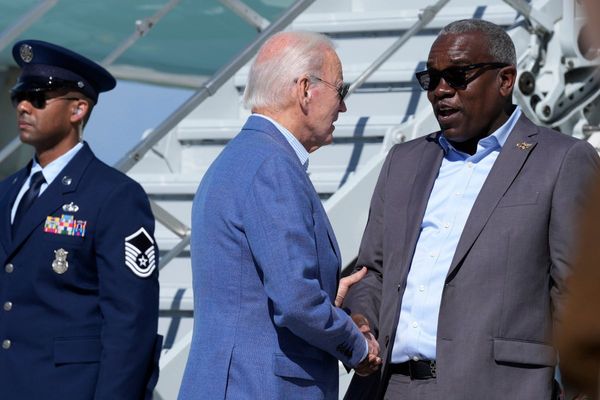
Seismic political shake-ups, international upheaval that reverberated across the nation and a vivid cultural renaissance – 1975 was one of Australia’s most pivotal years of the 20th century.
Five decades on, the National Library of Australia in Canberra is about to unveil a new exhibition spotlighting the year the prime minister was sacked, the Vietnam war came to an end and how, despite Hollywood telling us we’d never go back into the water, we did.
Taking the title of the seminal Skyhooks album as inspiration, 1975: Living in the Seventies will explore how global conflict, pop culture, fashion and political reforms collided during a time of deep transformation.
It is what the library’s director of exhibitions, Guy Hansen, calls one of Australia’s “hinge years”, up there with 1914 and 1949, when Australians ceased to be British subjects and a federal election ushered in the Menzies era respectively.
“Australia started to go in a distinct direction,” says Hansen, who was a primary school student in Sydney’s western suburbs at the time.
“And of course, back then everybody watched the same news. The family would sit down and watch the seven o’clock news and hear what James Dibble had to say about things … and even if you were 11, you got a sense of the world.”
The year did not begin well. The cleanup from Cyclone Tracy’s devastation had just begun – the death toll had risen to 66 – and five days into the new year 12 lives were lost when the bulk ore carrier MV Lake Illawarra struck the Tasman Bridge in Hobart.
And it was bookended by the dismissal of Gough Whitlam’s government on 11 November, sparking one of the most intense collective public reactions in Australian political history.
Under Whitlam the nation underwent sweeping changes to healthcare, divorce law and immigration policy, pushing Australia toward multiculturalism. And global events had not had such an enormous local impact since the outbreak of the second world war.
The civil war that began in Lebanon would lead to 30,000 people migrating to Australia. Three times that number arrived from Vietnam after the fall of Saigon.
One neighbour to the north, Papua New Guinea, gained independence from Australia; another, Indonesia, invaded East Timor, with the diplomatic crisis deepening after news of the murder of five Australian journalists in Balibo.
Australia was unable to quarantine itself from global economic stagflation and a looming energy crisis and watched on in wonder as Margaret Thatcher became the first woman in British history to take over the leadership of a major political party.
The country’s hallowed communications institutions were disbanded, with the Postmaster-General’s Department becoming Telecom Australia and the Australian Postal Commission becoming Australia Post. The safari-suit wearing South Australian premier, Don Dunstan, scandalised conservative Australia with his decision to decriminalise homosexual acts between consenting adults.
As gay rights were ushered in, the symbolic start of Indigenous land rights was marked by Whitlam pouring soil into the hands of the Gurindji leader Vincent Lingiari.
It was also a year of youth-led culture. Double J became the new young voice of Australian music, Molly Meldrum the face of the country’s most popular music show and Skyhooks dominated the year as Australia’s answer to the big glam rock bands emerging out of London.
Australia switched to colour television.
And while everyone under the age of 30 was busy doing the Time Warp and swearing to never set foot in the water again, Australian films also came into their own.
“You’ve got movies like Picnic at Hanging Rock [and] Sunday Too Far Away, popular, important movies made by Australian directors with Australian actors,” Hansen says.
“There’s this kind of strong nationalism and cultural pride in the 70s, with this desire to tell Australian stories.”
The exhibition promises to be more than just a heavy dose of baby boomer nostalgia, he says. It demonstrates how 1975 redefined what it meant to be Australian.
1975: Living in the Seventies opens at the National Library of Australia on 14 August and continues until 1 February. Entry is free







